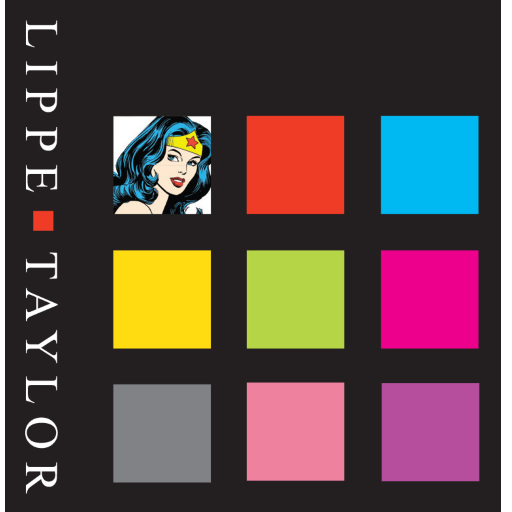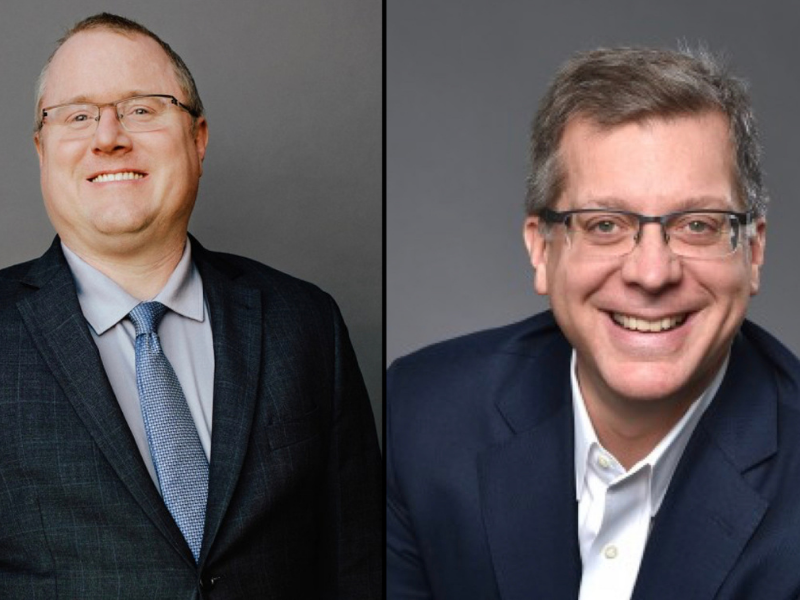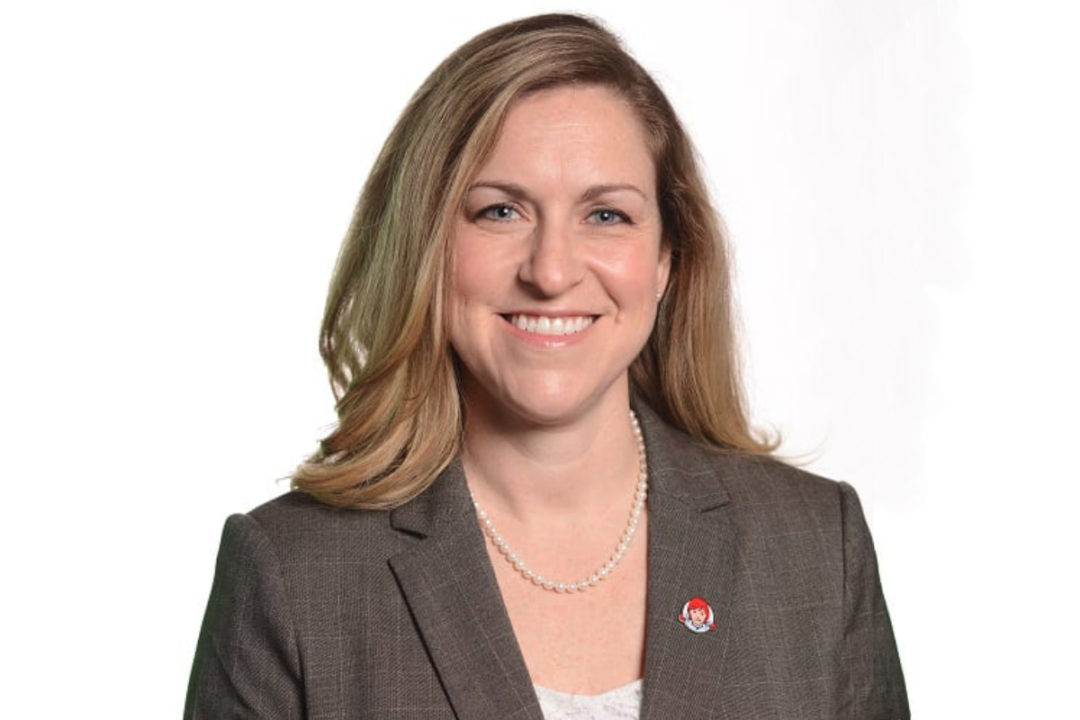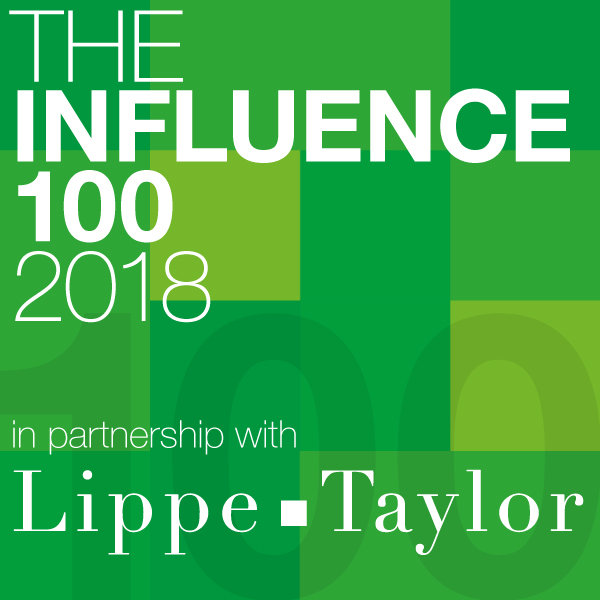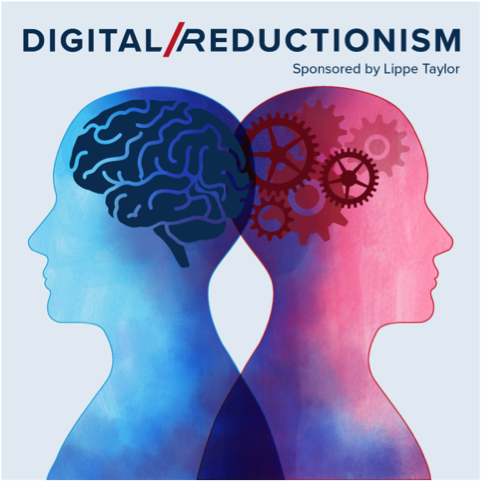Lippe Taylor 06 Nov 2018 // 4:36PM GMT
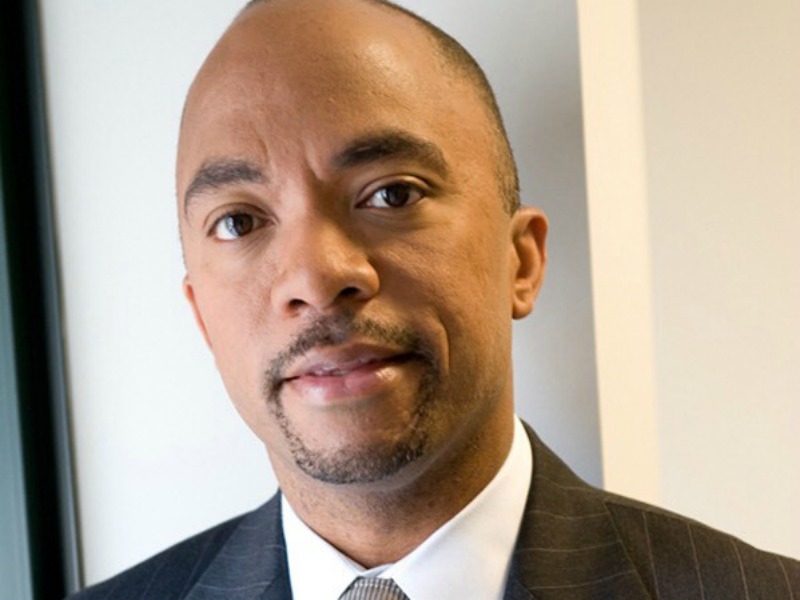
This is the next installment in the Digital Reductionism series, a conversation with Lenovo's Torod Neptune. You can listen to the full interview in the podcast below or read the highlights from the interview here.
Interviewer: Paul Dyer (PD), President, Lippe Taylor
Brand Leader: Torod Neptune (TN), CCO at Lenovo
Paul Dyer: Torod, thank you for joining us.
Torod Neptune: Yeah, thanks for having me.
PD: Let's talk about something that's specific to Lenovo. Your tagline, “Different is better” has been described as a guiding principle and a positioning statement that has played an important part in Lenovo's success. How do you ensure that this philosophy is more than just a tagline and actually guides people's actions on a daily basis?
TN: I think about it a number of ways. As a brand ethos it's important that it be reflected in the story that we're telling, across the brand globally and across stakeholder groups. I think from the story vantage point, we do a lot of work to ensure that we are capturing the intelligence of what that looks and feels like, across our business, throughout our product portfolio, in the way we describe how we work, and in how we articulate the best of what we believe is our culture on our best day. I often describe the role that I play as working to ensure that the company we desire to be connects to the company we are today. Not that we've got it solved; but as a journey, we believe that that philosophy is consistent across the board. There are always places where we have to do work to ensure that it is, and where it's not, to address those challenges.
PD: That's interesting, that bridging the gap between aspiration and authenticity … a word we keep hearing. Another word we hear a lot of these days is “relevance,” which is such a hot topic in communications. Lenovo has products that touch the lives of vastly different audiences across the world. How do you ensure that the brand remains relevant across so many products in so many geographies?
TN: Lenovo is across 160 countries--relevance at the global level and also relevance at that 160-market level is a challenge. We all have become much more focused on digital sophistication, and perhaps the best way to describe it is the intelligence that's required to understand what relevance looks like at the macro level and at the market level, and being able to translate those two into a cohesive master brand story--but also understand that that story gets expressed in Bratislava, and in Moscow, and in Beijing. That nuance is really where the power of data, intelligence and insight connect.
PD: You mention the importance of data and intelligence and insights in your ability to connect that story relevantly to each market. Is that something that resides within the communications function at Lenovo or is it a partnership with other business functions?
TN: It's a collaboration. I think within the marketing discipline there's certainly a core group of like-minded, data-believing leaders who, for varying reasons, see the critical importance of being data informed--I don't often like to suggest “data-driven,” but being data-informed. Obviously, within the marketing discipline there's a like-mindedness when you think about some of the traditional brand data and product-level data that lives in a typical marketing organization.
PD: We talk a lot about being “data-inspired,” which I think is along the same wavelength as data-informed, but different. Companies are spending a large amount of money on their data warehouses, data infrastructure, and things like that. But at the end of the day, if the comms function isn't using it, then what’s the point?
TN: Yeah.
PD: You mentioned your markets--160 markets from Bratislava, to Moscow, to Beijing. When you were at Verizon you were leading communications at one of the largest brands in America, but now you have to think on a much broader, global scale. How did you prepare for this shift when you made that change?
TN: Lenovo is a massive, global organization. Not just our customer base and the markets that we represent, but even within the communications discipline, the cultural geographic diversity is massive. In some ways, for me personally, it's been an exercise in broadening the aperture. I don't necessarily think that functionally I'm playing much of a different role. My perspective about the world, and the globality of that is probably the most significant change. The world really is global, and global matters. I find it unbelievably exhilarating to expand the aperture, and to realize that my perspective, (that has been influenced largely from a western point of view), is not how you engage, and not how you create, or build an authentic, relevant, contextual, emotive connection to a group of people who perhaps haven't experienced the same things that we have in a western-culture sense. Integrating all those perspectives into how we think about driving our brand forward is a significant challenge, a big opportunity, and one of the things that makes Lenovo an unbelievably exciting place to be within the marketing discipline.
PD: You said before that you've integrated eastern and western cultures into Lenovo's brand and products. Can you expand on the integration of these two cultures and how they inform your communication strategy?
TN: We talk about ourselves as a global company with Chinese roots, and so there is certainly some unbelievably strong heritage from China. I do think that as Lenovo has become a global technology brand, it has always been fairly consistent about the value of what happened for us in this globalization, and consistent about integrating strong cultural heritage, philosophy, management style, approaches to leading, and integration with cultures that we acquired as the business grew and globalized. China represents only about 25 percent of our revenue. We have truly become a global company. It's quite clear when you look at the different perspectives that are a part of the leadership of the company. The twelve direct reports to our CEO represent just about as many different countries and geographies. Again, back to this melding. We are not a “western” company. We are not an “eastern” company. We have brought the best of all of that together. That secret DNA lives in the way we think about products and the way we think about consistent improvement and betterment of things, and tinkering. It’s something that we believe, and it’s ingrained throughout everything that we do, and reflected in the things that are more visible, as well as less visible.
PD: One of the things that we hear a lot is the importance of integration of internal and external communications, and that employees can be your best advocates. Sometimes the best internal communications are external, and vice versa. You're mentioning the acquisitions that Lenovo has made and their importance to your business strategy, along with your secret DNA. How do you internally make sure that you're communicating that DNA to these disparate organizations that you're onboarding?
TN: It begins with the consistency of a clear story, a clear narrative, a clear position, that we're telling across our stakeholder groups, obviously with nuance for things that would make that message contextual for one country versus another. For us, that story has got to have four components around what we consider our core differentiators as a business.
1) Diversity and inclusion are core to who we are. 2) The innovation around our product portfolio--not the products themselves, but that philosophy, that mentality that is inherent in why we build great products. 3) Telling that story in a way that makes us relevant, and in some ways perhaps is designed to articulate who we are, why we exist in the world, and the reason a consumer anywhere should care, root for us, and want us to win. 4) Then, the performance, the financial story about the transformation that we are driving here within the organization. And, we believe we have an unbelievably differentiated story to tell concerning our global citizenship work and what we're doing as a brand to really improve the lives of consumers around STEM. Those are the four platforms, or pieces of our story. We are trying to be unbelievably disciplined about telling our story consistently and clearly across our stakeholder groups in a way that ladders to that ultimate brand position that we believe we've got to deliver on.
PD: That's great, and it's an important nod to the “why,” telling Lenovo's “why.” You mention global citizenship. Can you expand a little bit on that? Sometimes these citizenship programs can feel like an afterthought--something that the company is doing simply to get credit. Other times, it can feel like something that really is core and true to the company. How do you ensure that it really is something that is meaningful?
TN: I look at it through the lens of this accountability I have for connecting who we are with who we aspire to be. Too many brands think of causes in terms of the flavor of the month. One of the most critical things is determining whether or not we have earned the right to articulate a point of view, or attach ourselves to a cause or an issue, or perhaps whether we've been invited to have a point of view. Back to our global citizenship work, and prioritization around STEM, and technology: we believe it's a critical responsibility as a brand to be involved in the communities where we are and where that's a result of being a global company, that obviously is focused on driving sales. Truth, in its very essence, is perhaps more of a justification for being involved. I think it's unquestionable that the role of being involved in our communities as a global entity is so much more critical today than it was, perhaps, when we were not in highly-commoditized industries where we had to spend so much time trying to get to a singular set of truths that would help us be relevant in a market. When your products are highly commoditized, with very little differentiation, you have to figure out how to get to what makes us valuable and meaningful. We need good consumers across our stakeholder base to advocate for us, to be enthusiastic fans. I think our work in the community is a key part of that.
PD: How do you, as the comms leader, ensure that the communications function has a seat at the table so closely connected to the business, when it's such a high-growth and changing business?
TN: I get a little concerned that communications, or integration comms and marketing functions in our ecosystem today, are still weighted a little more heavily toward the traditional. Given all that we've seen, this integration that continues to happen within marketing and comms, and IT as well, at the end of the day the traditionalists are going to find themselves increasingly boxed out of the conversations. Whether those conversations happen at a table where the seats are designated, or whether it's a theoretical conversation that's happening within brands, I don't think that is a long-term recipe for value, impact, or influence. This is where I believe whole heartedly in being data-informed. That’s where the data, and the analytics, and the insight, and the leveraging of those to transform the way we think, the way we operate, the way we plan, what we see as our mandate within our organizations. That is the most significant thing to change the dynamic between us and our C suite, to the degree that we can guarantee that we are constantly invited to have that conversation whether that involves a seat or not. The degree to which we are still talking about counts, and clicks, and keywords, and coverage, I think those are reflections of some serious risk to our value and credibility as a function. We're still talking about those things, and measuring those things, and positioning those as indications of value that we're bringing to an organization. I am surprised at the extent to which I still hear it.
PD: I think that's very interesting, the idea that measuring counts and clicks is actually a risk or threat to what we do as a function, in so far as they can dramatically undervalue what we do, and in other ways even reinforce the wrong behaviors. On Twitter you recently commented that there's no such thing as digital strategy anymore. There is just strategy in the digital world. And now you've made reference to traditionalists who maybe are entrenched and have not evolved with that. As you think about building out the communications function and capabilities at Lenovo, how do you find that balance between digital expertise and more traditional skillsets in order to drive that ROI the business is seeking today?
TN: I think digital is a foundational competency today, whereas in previous years it was thought of as a strategy, just like social was thought of as a strategy or an approach, as opposed to a core competency. I also do not minimize the value of media relations. At our core that is still a foundational competency, and I hope it will continue to be, because in some ways, that is a value that we bring to our organizations. That's key. If I think about the next three to five years and where I believe our disciplines are going, whether you call it marketing, or comms, or integrated marketing, or integrated comms, I think we will continue to become, more and more, brand storytellers in reality. And our ultimate accountability is to figure out how to understand who those people, those stakeholders are, understand what moves them, how to engage them, and then create the channels and platforms that are going to drive that engagement. I think that is innately a digital conversation, and that's where we've got to have a core competency, similar to the way media relations for so many years was seen as the core. Digital is that foundational approach.
PD: You've been an important voice in our industry for greater diversity in PR. How have you seen diversity lead to greater impact within the industry, and what has the response been when people have heard you advocating for greater inclusiveness?
TN: There's a lot that data has told us. These are unquestionable truths: that diverse teams are more productive, more creative and produce greater outcomes. That's data-confirmed, and so those things we can take off the table. They're critical truths in terms of trying to drive increased business performance, so it’s a business imperative and I have always come at it as a business imperative, not a nice “to-do." As a business leader, if you told me there were some strategic imperatives that I could organize around that would guarantee increased productivity, creativity, and output, I'd be foolish to not look at those things. That's how I think about it foundationally. I'd say in terms of the industry, this is where I think it is what it is.
PD: I know that you've also been quoted as holding your agencies accountable on the diversity metric. We've also heard a lot lately about changing relationships with agencies, the death of the agency, of record relationship. How do you view the agency ecosystem today, and what do you think agencies need to do differently to be better partners in the future?
TN: There's two sides to this coin. I think most organizations today, brands or agencies, are either transforming or being disruptive, one or the other. As a brand we are challenged to transform ourselves, given what's happening. In a highly commoditized industry there is unbelievable pressure, as a global organization, to drive market growth, to change some significant reputational challenges we have in certain parts of the world. Fundamentally, we are looking at how we are organized and how we structure ourselves, and how we drive engagement, how we create the channels and platforms to connect with our stakeholders once we understand who they are. The pressure point for agencies is to parallel the transformation that brands feel. Agencies have to respond to the challenge of similarly redesigning the way they operate and behave, the way they think about their competency, and to parallel what's happening with brands. So it's not necessarily that agencies need to change, as much as that agencies need to map to what the reality is that I'm challenged with as a marketing leader within our organization. I find that's a tension point. We still see some of our agencies that are wrestling with being wedded to a structure or a way that is light years behind where we are as a brand. That's the inflection point, in my mind, that's creating a lot of this tension across the industry, and that I don't think has been quite addressed to the degree that it needs to be and will have to be.
PD: You talk about transforming yourselves and being constantly in that transformation mindset, and obviously the need of your partners to map to you on that, but you also have significant aggressive business goals. How do you find the balance between continuing what works, the tried and true, versus disrupting yourself to stay cutting-edge?
TN: I was in a conversation with some of my team in the last couple days, and this was also a challenge I gave one of our agencies a couple months ago. I have always been of the mentality that when you're trying to transform an approach, a team, a function, and the way you look at integrated marketing, being the agitator is really key. At the same time, you gotta keep the wheels on the bus going round and round, but given the speed of change that we are experiencing internally, externally, the disruption's gotta be core. Whether you'll take the approach that I took at Verizon where you hire a core team of disruptors and give them that mandate: "Your mandate is to disrupt," that little skunkworks team is key because they're the people that are poking and prodding. They're the "Why are we doing it this way?" or, "Here's an interesting way." I think having that is key. And I've challenged our agencies. We need that core team that's going to help us keep the wheels going round and round. But more important, given the challenge of us understanding what's happening around the corner and how we evolve ourselves and our approach to driving brand, we've also got to have that skunkworks team, that core set of disruptors who are going to agitate us. I'm the most comfortable when I have that team around me. I get a little concerned when the traditionalists rule the house, both from our agency partner networks and also within our internal organizations. For me that's critical, and has always been, if not priority one, priority two to ensure that that team is there and is a part of my organization, and sees their mandate as the disruptors, and that they have the cover, because you can't just hire disruptors and leave them to fend for themselves. You've actually got to give them the gravity, so that the organization doesn't come in and take them all out at their knees.
PD: That's interesting to hear you talk about deliberately disrupting yourself, having an agitator mindset, and the importance of doing that as a leader. Earlier you mentioned broadening the aperture as an important mindset. Are there any other sort of mindset shifts that you are either trying to drive throughout your organization, or that you would advocate for within our industry?
TN: The challenge of being a global organization is to think about how you drive impact at scale. We have a lot of incremental things that we could do, but at the end of the day if we can't have impact at scale, is it really worth the investment of dollars, resources, and energy? That's the other challenge, to constantly think about, can we scale that idea to really drive brand influence and brand impact, and does our team think that way? And then do our support partners think that same way as well?
PD: What are things that are confounding you or your team the most today in terms of channels, formats, trends--anything that your team is grappling with but hasn't cracked the code yet?
TN: I often like to think about this core set of questions that I don't know the answer to, things like, “What really influences the way we're perceived at a global, macro level, and then at a micro market level?” Obviously, we have a ton of data that we're looking at today, reputation indices and brand-level data, but what really influences the way a consumer thinks about us, and what prompts them to behave and act, or engage--we don't know; I don't know. If you could choose tomorrow to identify the ten organizations that you, Mr. and Mrs. Consumer, want to see maintain their existence in our world, what would go into that thought process? Those are fascinating existential questions that go beyond the tactical day-to-day media conversations, social sentiment sharing, and perception monitoring; that speak to the real heart of what I, as business leader, think about investing dollars, and markets, and products. As marketing leaders, we've got to get to some of these truths. I’d love to know the answers to some of those things because I think they speak to macro-truths that should influence the next three, to five, to seven years of whatever this discipline is that we are part of, or whatever it'll be framed as over that time period. And those are the kinds of questions, I think, as leaders sitting in the sweet suite, the C suite, we've got to be able to ask.
PD: We've covered a lot of ground. Are there any other topics, or just thoughts, that you would leave our listeners with?
TN: I'm heartened by a lot of the things that I see happening, not just within our organization, but again within the broad kind of brand universe. And certainly, as I travel the world and meet different people, and have different conversations, and again, broaden my aperture, I'm heartened by the reality that the world still is flat. I think being a part of a truly global brand that is trying to matter in the world and society at large is certainly something that I feel excited about every day. My hope is that my peers and colleagues find themselves in that situation and that we do great work. That’s what we all aspire to do. I think we can all vote that as an ultimate aspiration. That's probably a pretty good one to have.
PD: I think everybody will agree with that. Torod, thank you very much for your time and your insights. I think people are going to be very excited to hear everything that you shared here today.
TN: I appreciate the time. It's good talking to you.


































.jpg)


